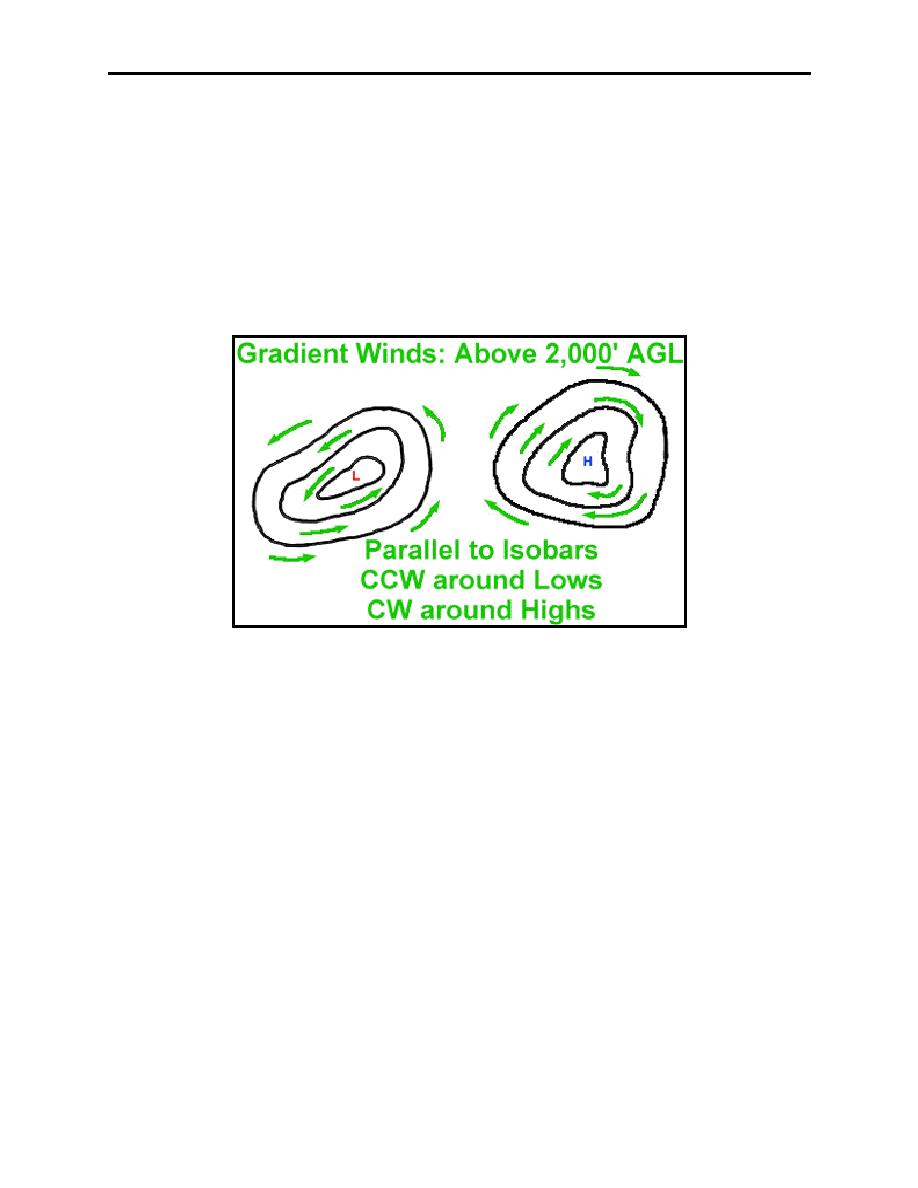 |
|||
|
|
|||
|
|
|||
| ||||||||||
|
|  CHAPTER TWO
AVIATION WEATHER
Gradient Winds
While the pressure gradient force causes air to flow from high- to low-pressure across the isobar
pattern, another force acts upon the wind to determine its direction. The Coriolis force, created
by the Earth's rotation, diverts the air to the rightwith respect to its initial direction of motion
regardless of whether the air is near a high- or low-pressure system. The result of these two
forces is the gradient winds, which flow perpendicular to the pressure gradient force. This
means gradient winds flow parallel to the isobars (Figure 2-6) and results in circulation flowing
clockwise around highs and counterclockwise around lows. Finally, gradient winds are found
above 2000 feet AGL.
Figure 2-6 Gradient Winds Flow Parallel to Isobars (Found Aloft)
Surface Winds
When we consider winds below 2000 feet AGL, we cannot ignore the role of surface friction in
the analysis of wind direction. Surface friction reduces the speed of the wind, which causes a
reduction in the Coriolis force. This results in a different set of forces that must be balanced: the
PGF, Coriolis force, and friction. When the new balance of forces is reached, the air blows at an
angle across the isobars from high pressure to low pressure. This angle varies as a result of the
type of terrain, but for our purposes, we will assume a 45 angle (Figure 2-7). Another way to
think of this effect is that the Coriolis force still tries to turn the wind to the right, from its initial
intended direction of the PGF, but it does not turn to the right quite as much as with gradient
winds. Thus, surface winds still move clockwise around highs, and counterclockwise around
lows, but since they blow across the isobars at a 45 angle, they also have a component of
motion that moves air out of the high pressure and into the low. Thus, given a gradient wind we
can calculate the appropriate surface winds as shown in Figure 2-8.
2-8 Atmospheric Mechanics of Winds, Clouds and Moisture, and Atmospheric Stability
|
|
Privacy Statement - Press Release - Copyright Information. - Contact Us |